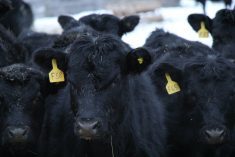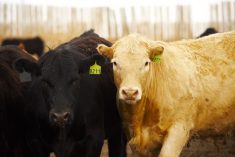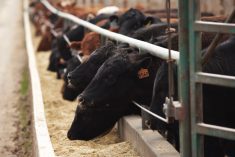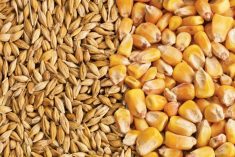Ontario’s beef industry was already in the midst of an economic crisis, but COVID-19 is worsening the financial toll on the province’s cattle feeders.
Due to extremely limited processing plant capacity, an uncompetitive market and disruptions to trade and market access, Ontario’s beef industry was losing an average of more than $2 million per week last year and into 2020. The effects of COVID-19 are expected to aggravate this situation, despite the recent upturn in retail demand.
“Even with the ballooning box beef prices at retail, the price feeders are receiving for their cattle have not kept pace, despite rebounding cattle prices in other competing jurisdictions, including those in Western Canada,” said Beef Farmers of Ontario president Rob Lipsett, a cow-calf producer at Annan, Ont.
Read Also

U.S. livestock: Cattle futures turn lower
Cattle futures on the Chicago Mercantile Exchange were weaker on Monday, ending a corrective bounce off nearby lows as high…
Limited processing plant capacity in Eastern Canada is one of the major factors in the existing crisis. Utilization of packing plants in the region rose from 85 per cent in 2016 to 95 per cent in 2018, restricting processing capacity and competition in the marketplace. This issue intensified in December with the closure of Ryding-Regency, the province’s third-largest packing plant.
Why it matters: Because of Eastern Canada’s limited processing capacity, many producers are feeding cattle for longer than expected, raising input costs. They then face penalties for overweight animals once they are finally sent for processing. This has resulted in producers losing $180-$300 per head on average for the past year.
“The depths and prolonged nature of the market losses experienced by beef farmers in Ontario have not been seen since the BSE crisis of the 2000s,” says Lipsett.
The impact of COVID-19 is adding pressure to an already financially strained feeder sector. One example of this is a reduction in access to dried distillers grains (DDGs).
This, Lipsett notes, is “due to a decline in oil demand, which has resulted in decreased ethanol production and therefore a decrease in the amount of DDG by-product available.” It’s generally more expensive and difficult to source substitutions for this particular ration.
“Everything with respect to COVID-19 presents risks to the supply chain across the country,” Lipsett said. “With that said, industry is working closely with industry and government partners across the supply chain to ensure contingencies are put in place, and cattle and meat continue to flow.
“However, even by minimizing disruptions in the beef supply chain, Ontario feedlot producers continue to face serious profitability challenges in the wake of the prolonged losses.”
BFO is among the many agricultural associations that have asked federal and provincial governments to enhance business risk management programs immediately, as well as other measures to support beef producers. The association’s recommendations were sent to both the federal and Ontario provincial governments on March 20.
“What impacts COVID-19 will have in the short, medium and long term are unknown, which is why it’s vitally important for governments to enhance farm safety net programs to ensure farm viability can be ensured if the market impacts of COVID-19 get progressively worse,” Lipsett said.
The full list of BFO’s recommendations is available on the association’s COVID-19 Updates webpage. The list includes:
- Uncapping the provincial risk management program.
- Providing an AgriInvest stimulus, contributing a minimum of five per cent of allowable net sales without producer matching contributions, making withdrawals tax-free and increasing overall funds that can be accessed.
- Raising the AgriStability trigger to 85 per cent, removing the reference margin limit and making enhancements retroactive to 2019.
- Removing late participation penalties and allowing producers that have exited the programs to re-enroll.
- Creating a fed-cattle and cull-cattle set-aside program to help manage the supply of cattle.
In early March, BFO requested an Ontario Cattle Emergency Assistance Program from the federal government. This included “business risk management funding to address the shortfall in current programming,” according to a March 6 press release.
— Piper Whelan is a field editor for Canadian Cattlemen at Airdrie, Alta.
















